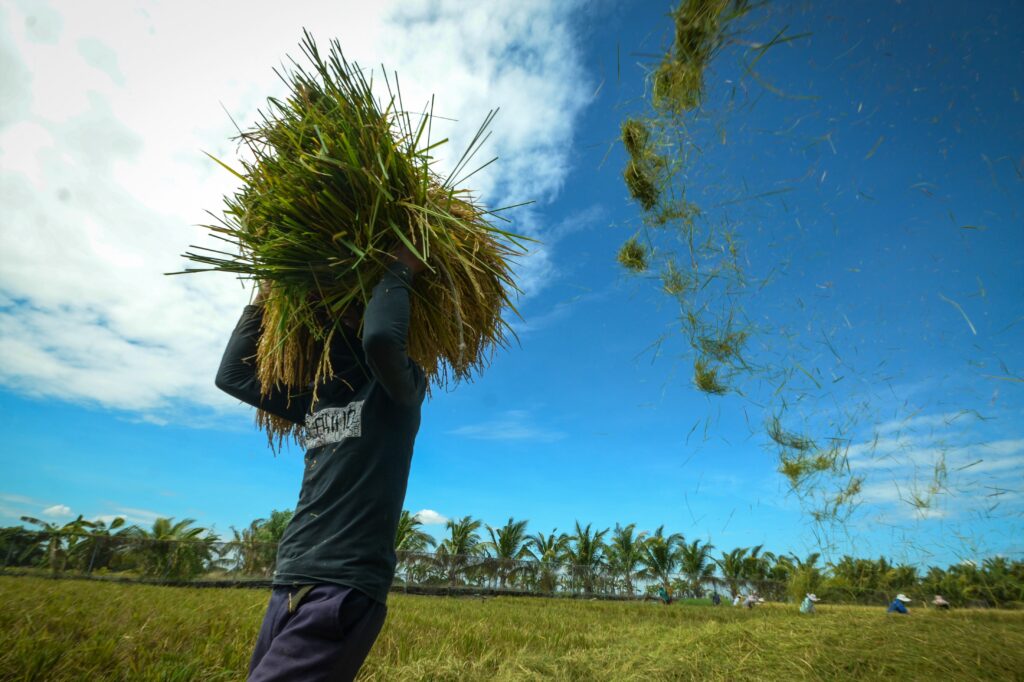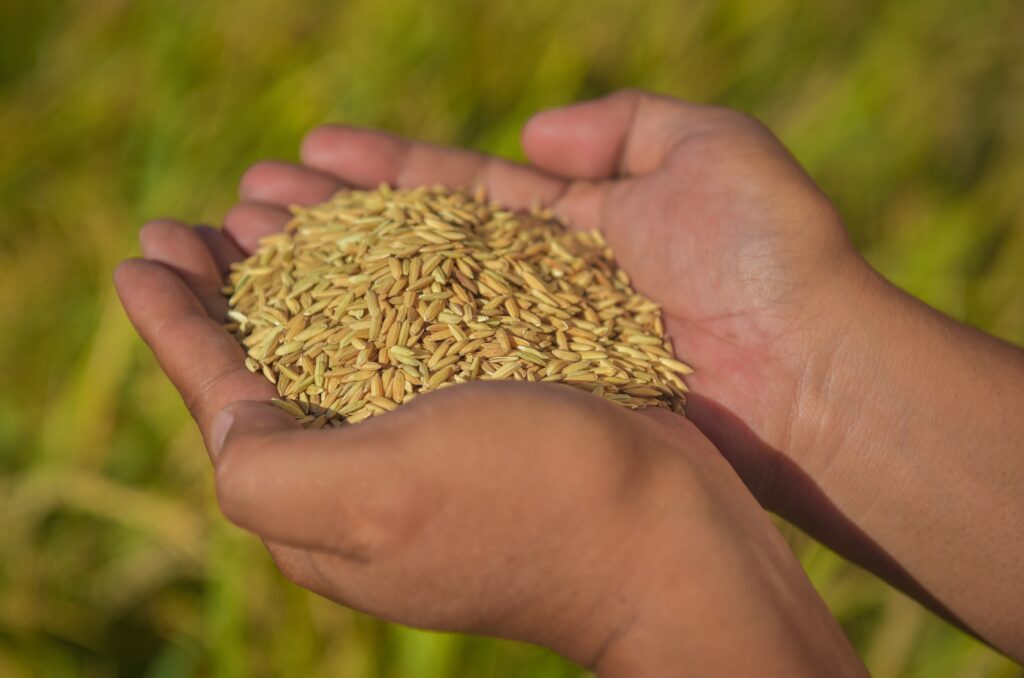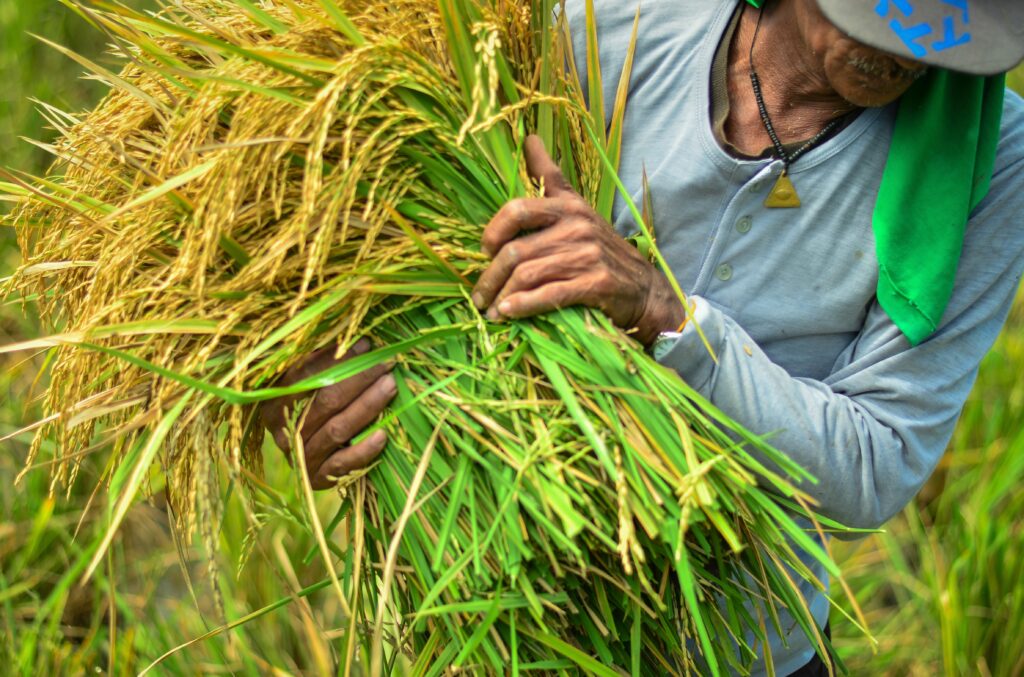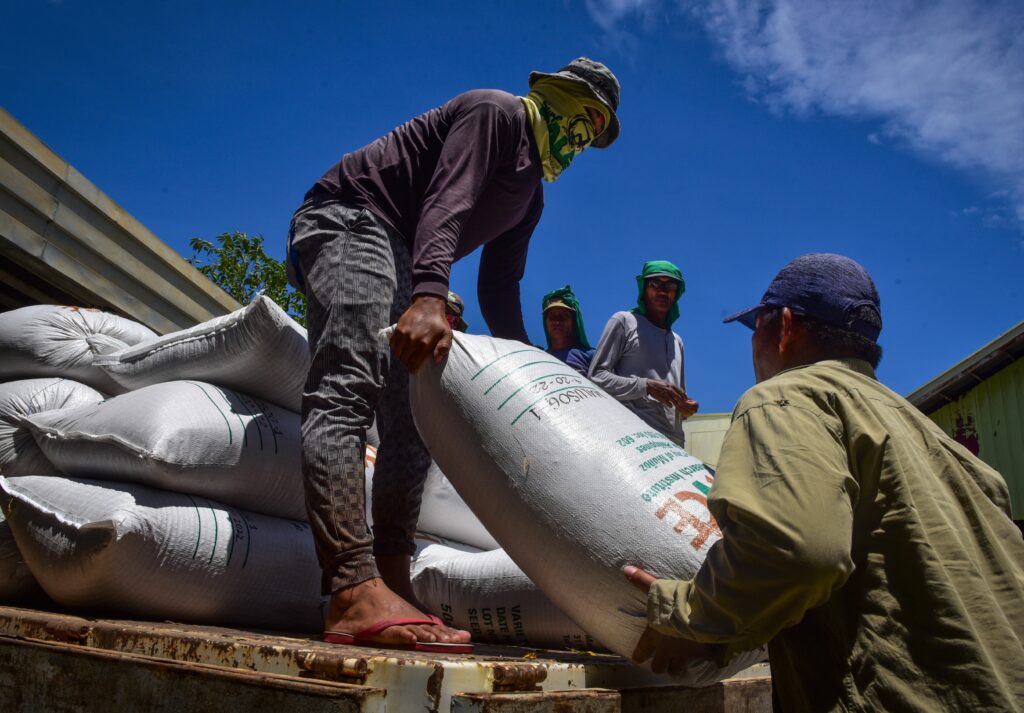By Henrylito D. Tacio
Photos courtesy of DA-PhilRice

Despite its name, vitamin A is not a vitamin but a hormone (prohormone, specifically). The human body produces it as a response to sun exposure. A person can also boost his or her vitamin A intake through certain foods or supplements.
Not having enough vitamin A may mean losing your eyesight. Even worse, it may lead to untimely death.
Vitamin A disease (VAD) is how this nutrient-deficient is called. The Geneva-based World Health Organization (WHO) said VAD is the leading cause of preventable blindness in children and increases the risk of disease and death from severe infections.
VAD is a public health problem that hits young children and pregnant women in low-income countries, the United Nations health agency said. An estimated 250,000 to 500,000 vitamin A-deficient become blind worldwide every year, half of them dying within 12 months of losing their sight. Annually, about 670,000 children under five die of VAD.
Although VAD is under control in the United States and other industrialized countries, it is still a significant health concern in developing nations, particularly those in Africa and Southeast Asia.
In the Philippines, a 2016 study on the Economic Burden of Malnutrition conducted by the United Nations Children’s Emergency Fund (UNICEF) reported 1,840 childhood deaths per year due to VAD.
In its 2019 Expanded National Nutrition Survey, the Food and Nutrition Research Institute (FNRI) of the Department of Science and Technology reports that VAD affects 15.5% of children aged 6 months to 5 years.
Vitamin A is an essential nutrient for cell growth, wound healing, maintaining healthy skin and lungs as well as maintaining healthy vision. Lack of it may lead to night blindness, or the lack of ability to see clearly in the dark. More seriously, it can lead to xerophthalmia.
“If treatment is not provided for night blindness, VAD will lead to xerophthalmia,” the US-based Unite for Sight explains. “The cornea and conjunctiva dry out severely and become thickened because the tear ducts do not produce enough tears. Foamy and whitish tissue spots and ulcers can form on the cornea, causing scarring and damage to the eye, and eventually leading to blindness.”
Children need additional vitamin A as they do not consume enough in the food they are eating. There are three general ways for improving vitamin A status: supplementation, fortification, and dietary diversification.
To prevent or treat VAD, nutritionists urged children and pregnant women to eat foods containing vitamin A such as liver, beef, chicken, eggs, whole milk, fortified milk, carrots, mangoes, papaya, guava, orange fruits, sweet potatoes, sweet pepper, lettuce, squash and green leafy vegetables (malunggay, kangkong and pechay).
“Clearly our current programs to eliminate VAD by promoting production and consumption of vitamin A-rich fruits and vegetables, distribution of vitamin A capsule supplements and mandatory vitamin A fortification of vegetable cooking oil are not enough,” said Dr. Emil Q. Javier, former science secretary and a national scientist.
But there’s one possible solution – and that is by incorporating vitamin A in rice, the staple food of Filipinos. “If we did not have rice, our deepest comfort food, we would probably feel less Filipino,” the late food columnist Doreen Fernandez once said. Studies show that an average Filipino consumes 290 grams of rice every day.
This is where golden rice – a genetically engineered type of rice that contains beta carotene, a precursor of vitamin A – comes into the picture.
Bioavailability of the carotene from golden rice has been confirmed and found to be an effective source of vitamin A for humans. According to the Laguna-based International Rice Research Institute (IRRI), the beta-carotene content of golden rice aims to provide 30% to 50% of the estimated average requirement of vitamin A for pregnant women and young children.
The result of a study published in the American Journal of Clinical Nutrition in 2009 showed that daily consumption of a cup of golden rice – about 150 grams uncooked weight – could supply half of the Recommended Daily Allowance of vitamin A for an adult.
“The beta-carotene produced in golden rice is identical to the beta-carotene in green leafy and many types of yellow-colored vegetables and orange-colored fruits, and identical to synthetic beta-carotene found in many vitamin supplements and food ingredients,” says IRRI, a member of the CGIAR System Organization, a global research partnership for a good secure future.
Golden rice — now called Malusog rice — is a transgenic crop, which means it has a novel combination of genetic material obtained through the use of modern biotechnology.
“In classical or conventional plant breeding, gene transfers are limited to between varieties of the same species; occasionally between varieties of the same genus, and rarely between species belonging to different genera,” explains Dr. Javier. “Transferring novel genes between plant families, much less from bacteria to plants, was impossible. But now with modern biotechnology, very wide introgressions are possible.”
With modern biotechnology, plant breeders can now bring together in one plant useful genes from a wide range of living sources, not just from within the crop species or from closely related plants.
“(Biotechnology) is a powerful tool that allows plant breeders to do faster what they have been doing for years – generate superior plant varieties – although it expands the possibilities beyond the limits imposed by conventional plant breeding,” explains the International Service for the Acquisition of Agri-Biotech Application.
Golden rice got its name from its golden yellow color, an indication of its beta carotene content. It was developed by combining a gene from corn and a common soil microorganism that together produce beta carotene in the grain.
Being a product of biotechnology, golden rice has been scrutinized. After several years of “rigorous biosafety assessment,” the Bureau of Plant Industry declared golden rice “as safe as conventional rice.”
Golden rice was finally approved for commercial propagation in 2021. The Department of Agriculture-Philippine Rice Research Institute (DA-PhilRice) is now ramping up its seed production operations so that it can deploy the seeds to interested farmers soon.
To plant a hectare with golden rice, the recommendation is 20-40 kilograms of seeds for optimum yield.
Dr. Russell Reinke, program leader of IRRI’s Healthier Rice, agrees. “Our confined tests show that golden rice is comparable to conventional rice-growing,” he says. “Golden rice does not require any changes in farm management or cultivation practices.”
Farmers who plant golden rice need not to worry about contaminating other farms planted to conventional rice. “Rice is a self-pollinating crop,” says Dr. Ronan G. Zagado, leader of PhilRice’s golden rice program, “besides, the rice pollen can only survive for a few minutes after flowering. Hence, there is very little chance for cross-pollination to take place.”
Farmers who plant golden rice – locally known as Malusog 1 – in their farms can use the same seeds planted previously. “Golden rice is an inbred rice variety registered with the National Seed Industry Council,” Dr. Zagado says. “Like other inbred rice varieties, its seeds can be used in the next planting seasons.”
Filipinos who are always eating white rice may find it odd eating golden rice. The color may be yellow but the taste is not different from ordinary rice. “The response we’ve received from participants of the initial sensory evaluation and the ceremonial taste test (conducted at PhilRice) is that they are unable to tell the difference in terms of taste and eating quality of golden rice vis-a-vis its parent background,” Dr. Reinke says.
Those who tried eating golden rice reportedly did not experience some health problems like stomach ache and allergy, among others. “No, we have not heard otherwise,” replies Dr. Reinke when asked if there were some health problems reported after consuming golden rice.
“It must also be noted that rice, as well as the genes used to develop golden rice, have a history of safe use,” he points out. “Further, the regulatory authorities in a number of countries like Australia, New Zealand, United States, Canada, and the Philippines have all declared golden rice as safe as ordinary rice.”
The future of golden rice being planted in most farms in the country looks optimistic. “The golden rice trait will be incorporated into a range of rice varieties suitable for growing in all regions of the Philippines so that populations who are vulnerable to vitamin A deficiency can have access,” Dr. Reinke says. “This is a very cost-effective way to improve the health and well-being of many people.”
Bangladesh may soon plant golden rice, too. But the Philippines did it first.
“(The Philippines) is leading the way in terms of development, commercialization of golden rice. This is one legacy that we can say is very important in terms of, again, ensuring food and nutrition in the country,” Agriculture Secretary William Dar was quoted as saying. – ###




